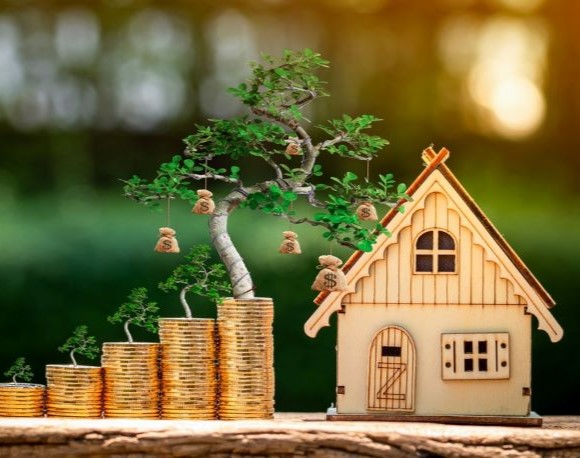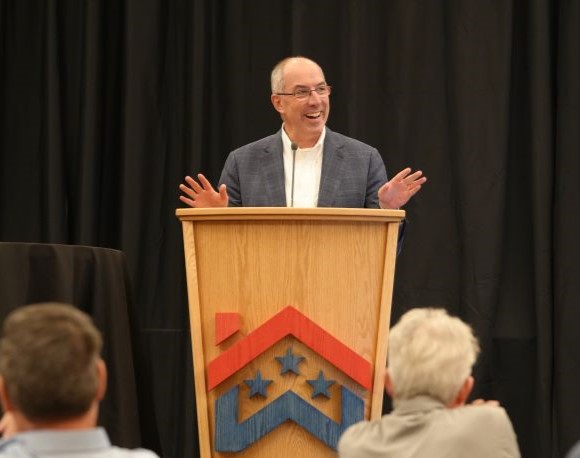July 23, 2025
Legislation signed into law in 2023 (HB1181) added a climate/resiliency goal to the Growth Management Act (GMA). This means that local governments must incorporate the new element into their comprehensive plans going forward. The climate element can take the form of a single comprehensive plan chapter or be integrated into several chapters/elements such as housing, transportation, and land use.
As part of this legislation, the Department of Commerce was tasked with developing guidance for local governments as they embark on this new planning endeavor. This guidance includes a "Menu of Measures" - a list of over 200 goals and policies - that jurisdictions can integrate into their comprehensive plans. Per the legislation, climate elements must maximize economic, environmental, and social co-benefits, while prioritizing environmental justice.
While the “Menu of Measures” offers a range of approaches, many of the suggested measures focus on land-use, development regulations, and infrastructure strategies that could carry significant cost implications for housing affordability.
BIAW recommends that as local governments develop their climate elements, they should carefully consider how proposed measures may impact housing production and affordability. With many communities already facing severe housing shortages, climate planning should be balanced with the need to ensure homes remain accessible for Washington families. Below is a list of thirty climate-related policy options identified from the “Menu of Measures” that will likely increase the cost of home construction and ownership.
Problematic Provisions
- Require the use of green infrastructure and low-impact development to address increased storm intensities and stormwater runoff.
- Adopt fire-resilience standards for new and redeveloped sites in high-risk wildfire areas.
- Require additional net-zero greenhouse gas emission features of all new residential and commercial structures.
- Ensure that buildings use renewable energy, conservation, and efficiency technologies and practices to reduce greenhouse gas emissions.
- Require the design and construction of commercial and residential buildings and their surrounding sites to reduce and treat stormwater runoff and pollution.
- Retrofit buildings for energy efficiency.
- Maximize renewable energy sources for the supply of electricity and heat to new and existing buildings.
- Recycle all paper, food, textile, and metal waste by [insert target date].
- Phase out natural gas use in existing publicly owned facilities by [insert target date] and retrofit with electric heat pumps.
- Identify and protect agricultural and forested lands that provide climate resilience benefits from conversion to more developed land use types.
- Provide private forestland owners and residents living in Wildland-Urban Interface (WUI) areas information about fire prevention (e.g., Firewise) practices, and support application of such practices via building code provisions.
- Develop and implement an urban heat resilience strategy that includes land use, urban design, urban greening, and waste heat reduction actions.
- Develop or modify design standards to integrate exterior building features that reduce the impacts of climate change and increase resilience.
- Protect significant historic sites prone to floods or other hazards worsened by climate change.
- Require electric vehicle charging infrastructure in all new and retrofitted buildings.
- Incentivize green building certification to improve energy and environmental performance.
- Establish incentives and regulations to maintain open space buffers to reduce wildfire risk.
- Identify and implement strategies for reducing residential development pressure in the wildland-urban interface.
- Require new subdivisions to bury electricity transmission lines and associated infrastructure to reduce damage from storms and wildfire ignition risks.
- Establish overlays, special zoning districts, design standards, or other strategies to increase resilience to climate hazards.
- Direct new development into areas where exposure to climate hazards is low.
- Establish development regulations that incorporate best practices for reducing the risk of wildfire, extreme heat, flooding, and other climate-exacerbated hazards.
- Implement actions identified in restoration and salmon recovery plans to improve the climate resilience of streams and watersheds.
- Prioritize the use of lower-carbon building materials in new construction and building retrofits to reduce embodied carbon.
- Minimize carbon emission impacts of building demolition with best available recycling strategies.
- Phase out the use of use of gas-powered landscaping equipment.
- Prioritize the preservation and weatherization of housing in overburdened communities, particularly at higher densities, to reduce emissions and increase resilience.
- Develop dedicated electric-vehicle (EV) lanes on local roads and highways.
- Maintain a stable urban growth area to reduce development pressure on rural and resource lands.
- Require solar panels on buildings with large rooftops, as well as within or over parking areas.
To support a more balanced approach, we’ve identified a set of options that have the potential to both reduce emissions and improve housing affordability. These measures demonstrate that it's possible to pursue environmental goals while also addressing Washington’s critical need for more attainable housing. We generally encourage jurisdictions currently developing their climate plans to prioritize these types of strategies.
Positive Provisions
- Incentivize recycling of construction and demolition debris.
- Foster higher-intensity land uses in mixed-use urban villages and transit corridors.
- Create and sustain a business technical assistance program to increase recycling and reduce waste.
- Prioritize the adaptive reuse of buildings, recognizing the emission‐reduction benefits of retaining existing buildings.
- Construct and maintain new water-storage systems (e.g., large cisterns, water towers, and reservoirs) to provide back-up water supplies during droughts and support climate resilience.
- Maximize solar access of site design, where practicable, for new solar-ready residential and commercial buildings.
- Develop a program that will enable recycling of all construction and demolition debris by [insert target date].
- Prioritize infill development through zoning and permitting process.
- Increase or remove density limits in areas well-served by transit and other services within the urban growth area.
- Increase housing diversity and supply within urban growth areas to reduce greenhouse gas emissions and support environmental justice.
- Allow middle housing types, such as duplexes, triplexes, and ADUs, on all residential lots.
- Increase residential densities near (within 600 feet) high-use transit stations and centers.
- Reduce loss of private forestland through forest stewardship education, and identify opportunities to expand incentives for forest landowners.
- Review land use maps and identify opportunities or barriers to responding to rapid population growth or decline, rebuilding housing and services after disasters, and other extreme climate impact scenarios.
- Develop and implement a strategy to expedite management of debris (e.g., downed tree limbs and buildings blocking roads and streams) after a disaster incident to reduce the risks of subsequent fire, flood, injury, and disease vectors.
- Promote local industrial development to support a circular economy that increases demand for reused and recycled materials and reduces demand for new raw materials and their embodied carbon emissions.
- Eliminate parking minimum requirements, and establish parking maximums.
- Develop local microgrid solar and battery storage facilities in low-impact sites.
- Implement complimentary, mixed land uses versus traditional zoning, such as locating business districts, parks and schools in neighborhoods to promote cycling and walking and reduce driving.
- Reduce parking requirements where there are multimodal options available.
- Plan for and invest in capital facilities to accommodate infill development.








